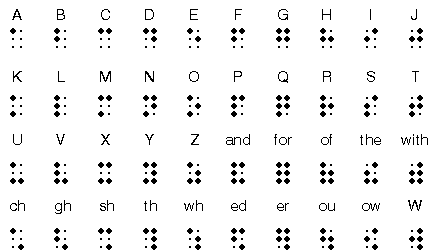
By Doug Goist
Each January, people across the globe celebrate Louis Braille’s genius communication system of tactile raised dots representing visual alpha-numeric print. January is National Braille Literacy Awareness Month, and January 4 is World Braille Day.
Born in France on January 4, 1809, Louis Braille fell victim to a tragic accident in his father’s leather harness making shop as a toddler. The 3-year-old was banging around on one of his father’s sharp iron awls when it suddenly flipped up and struck him pointed-end first, blinding him in one eye.
Due to limited medical intervention in 19th-century France, Louis developed an infection in his damaged eye that eventually spread to his healthy eye — leaving the young boy completely blind.
Later, while attending France’s Royal Institute for Blind Youth, the 15-year-old Louis would create the tactile language code that would now, and most likely forever, be known as “braille.”
Today, 200 years later, braille remains the de facto tactile communication language for people who are blind. Despite the attempts of many to estimate the percentage of blind children and adults who are braille literate, it is impossible to quantify. Some braille readers can skim through entire novels at several hundred words per minute; others are able to read grade one braille efficiently, but not the more advanced, contracted grade two braille; and still others use braille letters, numbers, and word abbreviations for item labeling.
What is loosely quantifiable, however, is that the number of blind and visually impaired people who can read braille has diminished disproportionally as the population has grown.
Some assign this decrease in braille “literacy” to the lack of access to skilled braille instructors and the mainstreaming of blind students into sighted classrooms; others cite technology advancement across the globe and the ongoing shift away from paper-based societies.
In our modern era, we are engulfed in a noisy, clicky, chattery world of digital devices in every hand, on every desk, and within every step and steering wheel from where we live.
Text-to-speech screen reading technology masterfully translates digital text into human synthesized speech in most world languages and dialects. Screen magnification technology enlarges even the tiniest fonts and optimizes color contrasts for easier reading. Rare is the sight of a blind or visually impaired reader in classrooms, coffee shops, or workplaces surrounded by stacks of tactile braille embossed paper.
So, does this mean traditional analog braille has outlived its use for people who are blind? The answer is not a resounding no – but, thanks to technology, it is a strong no.
A prime example is a new resource offered through the Library of Congress National Library Service (NLS) for the Blind and Print Disabled. For the first time, NLS is rolling out a refreshable braille display loaner program, https://www.loc.gov/nls/services-and-resources/equipment-for-nls-materials/#refreshable-braille-devices, whereby blind users of the NLS library service can receive refreshable braille displays at no or little cost for reading materials using tactile braille.
This could become a major factor in stemming the decline in braille literacy as it removes the primary obstacle inherent in braille technologies – the extremely prohibitive cost.
Refreshable braille displays are incredibly complex and intricate devices, requiring very specialized precision manufacturing and advanced processes involving what are called Piezoelectric actuators and small microcontrollers that use electrical fields to raise and lower pins into users’ fingertips to form braille letters.
For the same cost of purchasing a high-quality refreshable braille display, a person could fill an entire family room with modern furniture — costs can run from over $3,000 for a 40-cell desktop display to $6,000 for a top-end portable braille note taker.
But apart from physical technologies like braille displays, note takers, and Bluetooth keyboards, there are an increasing number of free electronic resources available that leverage technology to help ensure braille survives well into the future.
Free online learning resources, such as Perkins-sponsored Paths to Literacy, https://www.pathstoliteracy.org/, and American Printing House for the Blind’s (APH) Build Your Braille Literacy Toolkit, https://www.aph.org/building-your-braille-literacy-toolkit/, are just two of many excellent resources helping both braille learners and instructors acquire the building blocks foundational to achieving braille literacy.
So, while there appear to be fewer braille readers today than there were prior to the digital age, braille will always play a key role for people who are blind – especially as the costs of creating new braille devices continue to go down. It is not so much a matter of braille becoming a less desirable solution for accessing information; it is more a matter of increased options for those who have print disabilities. And braille will always be a critical tool for people who are deaf-blind.
If Louis Braille were alive today, he would be amazed by the incredible array of choices people who are blind have for creating and retrieving information thanks to technological advancement.
He would also be pleased to see that his 200-year-old invention remains as strong as ever and is still enhancing the lives of millions of people who are blind around the world.
For that, we all can say: Thank you, Louis! And happy birthday!
###